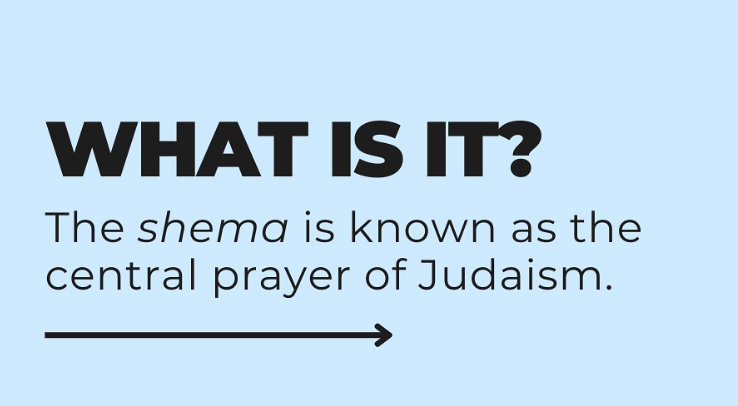Raboyseyee and Ladies,
The Shema Prayer: How One Verse Took Over Jewish Life
Of course, we all know the Shema. One of its three paragraphs – among other interesting happenings-including a second set of the Ten Commandments, this one slightly different than the first- is found in this week’s parsha of Vo’es’cha’nan. I should avada mention that it’s also Shabbis Nachamu and of course, those of age should reflect back on the good old days when many spent this Shabbis up in the Catskill Mountains at one of the myriad hotels, all nebech gone now. Alas, the Ois has written about Nachamu many times over the past 15 years and if you’re feeling nostalgic, check out the archives on this parsha. You will mamish enjoy. As an aside the Catskills are being rebuilt town by town by various Chasidic sects. Veyter.
We say the Shema -or are supposed to- thrice a day. Three? Shoin, when was the last time you said Shema al Hamita you bum?! Some of you never heard of Kriyas Shema Al Hamita. It means Shema just before bed. People say that? Oy vey, and we’ll circle back to that topic soon. The bottom line: At a minimum, we recite the Shema prayer twice daily, both times during davening. In the morning and in the evening.
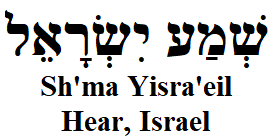
As well, we have gotten used to reciting the Shema prepping for a colonoscopy, before a root canal, or during unexpected and even expected very heavy turbulence. It’s the Jewish go-to line. It’s way more than a line; it is three full paragraphs but who’s counting? It’s part identity, part battle cry, and part national security protocol. At times, it shows up alone, at others, it comes along with one or three paragraphs but never with two. Ober, with so many powerful pisukim in the heylige Toirah —“Anochi Hashem,” “Love your neighbor,” “Zeh Keili V’anveihu,” or even, “Thou shalt not covet your neighbor’s wife,” just how did this refrain and three parshiyos get the gig? Were they voted in?
Let’s face it: There are 5 chumoshim, 54 parshas, 613 mitzvis, and thousands of juicy pisukim in the heylige Toirah. And let us not forget the 150 kaptilach of Tehillim; the choices for a refrain are mamish endless and one can easily think of a posik here and there that might qualify to be our anthem, our charge, or whatever. And yet, day in and day out, we recite the exact same trio of Toirah based snippets, stitched together like a spiritual power medley. And the questions include these: Who made the decision to anoint the Shema prayer as the king of all prayers? Who voted? Was there a committee? Were there other pisukim under consideration? Did anyone object?
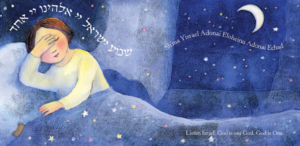
The Shema is everywhere and it’s recited by regular guys, good guys, tzaddikim, sinners, soldiers, oisvorfs, martyrs, kids at camp, and Jews who haven’t stepped foot in a shul since Clinton was president but suddenly remember it when their plane hits turbulence. It will be recited daily -and more often- if Commie-Mamdani becomes the Mayor of New York City. Yikes and oy vey! It’s our national anthem, our theological mic drop, our verbal mezuzah. It’s mamish ubiquitous.
Where do we find Shema? The short answer is everywhere! Shacharis and Maariv: Twice a day, every day, as commanded. One can skip half of Pesukei Dezimra, show up after Yishtabach, and still get a minyan as long as you don’t miss Shema. And at bedtime (Krias Shema al HaMitah): The Shema is a spiritual nightlight. Because what says “sweet dreams” like reaffirming monotheism and the Exodus? We also find the Shema -albeit alone- on Yom Kippur at Ne’ilah: That moment when the gates are closing, the chazzan is shvitzing, everyone is starving and looking at their watches incessantly, yet, we all scream Shema like it’s game 7 of the World Series. Let’s not forget that it’s also recited on every Deathbed: Rabbi Akiva did it. Martyrs in Spain did it. Holocaust victims did it. It’s not just tradition. It’s defiance. Let’s not forget that Shema is often the first line a child learns. And the last one we whisper into the ears of the dying.
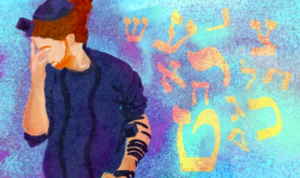
The bottom line: If Shema Yisrael had a frequent flyer card, it would be Platinum Elite with lifetime lounge access. This isn’t just a posik; it’s a lifestyle. It lives in our tefillin boxes, hangs out in our mezuzahs, pops up in daily for Shachris and Maariv, for bedtime rituals, deathbed declarations, and Yom Kippur closings. It’s busy.
But here’s the question: How did Shema become the line? Why davka this verse? Who decided that this would be the eternal Jewish motto as opposed to so many other good choices? And how taka did it manage to weasel its way into everything from tefillin to tefillah to toddler bedtime? Was there a vote? By whom? Was there competition? Any objections? Who gave us the Shema — the Jewish anthem, the spiritual password, the verse we whisper before death, yell in battle, mutter on airplanes, and scream at our kids before camp drop-off? Who decided that this posik, and not, say, “Loi signoiv” (don’t steal) or “Ve’ohavta le’reyacha komoicha” (which we only say and mean when convenient but don’t really follow), would be the eternal Jewish motto?
So happens that these questions are mamish relevant because -as mentioned above- this Shabbis, Shabbis Nachamu -as we read Parshas Voeschanan which incidentally also marks the beginning of year 16 of givaldige posts from the heylige Ois, we will come across the first paragraph of the Shema prayer. Ober taka, why and how did the Shema become the go-to tefilla when one is need, when one feels all alone, when one is desperate, and at many other times? What does the Shema have over other holy passages?
And what about bedtime? What’s pshat? As an aside, of the two other paragraphs, one can be found in Parshas Eikev 11:13-21) -next week’s parsha- and the last is found earlier back in Sefer Bamidbar in Parshas Shelach (15:37-41). The first paragraph of the complete Shema package is somehow the last. What’s up with that?
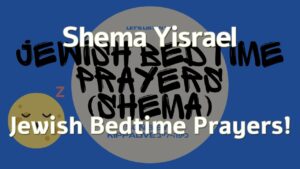
One could argue that Moishe was the first to utter the words and taka he did, mamish in our parsha. Ober, did he tell us to chant it every morning and night? He did not! Let’s dig further. The heylige Toirah says “when you lie down and when you get up,” and the Rishonim (early sages) argue about whether that’s a Torah obligation or Chazal’s creative interpretation. Either way, Moishe gave us the raw material, but not the laminated card in the siddur.
Some suggest that Ezra HaSofer and the Anshei K’nesses Hagedolah were involved, but were they? Could be! They did give us the siddur, the brochos, the haftorah, and much more. Maybe they slipped Shema into the rotation? Could be, but no source says they made it mandatory. And if Ezra really instituted Shema, wouldn’t he have mentioned it? Seemingly, the Shema was already established before Ezra and the good people of the assembly codified the siddur. Indeed, it predates the siddur. This Ezra fellow who was around in the 5th century BCE – seemingly a very good and busy man left one big imprint. He and the Assembly had their hands in the following enactments:
- They established many core institutions:
- Formalized tefillah (Berochis 33a),
- Compiled Tanach canon (Megillah 17b),
- Created the Berochis and much of the Shemoneh Esrei (see Rambam in Introduction to Tefillah).
And while they may have promoted the Shema as a daily reminder, especially with the second paragraph (Vehaya im shamo’a) speaking directly to reward/punishment — a core theme post-Galus Bavel, there is no direct source saying they formalized it into the twice-daily liturgy we know.
The bottom line: Debate aside, the fact that such a debate took place means that the Shema was already an accepted payer and mic drop. By the time the very first Mishnah opens with
מֵאֵימָתַי קוֹרִין אֶת שְׁמַע בָּעֲרָבִין? (Me’eimasai korin es Shema ba’arvin)?” — it’s already assumed that Shema is non-negotiable; it’s in and established. The Tannaim were regulating it, but someone earlier made it mandatory.
And here is where it gets interesting: Many suggest that the Zugos — the rabbinic tag-teams of the Second Temple era — who needed a daily theological anchor during a time of sectarian chaos, strung together the Shema prayer. The what? The who? Those mysterious rabbinic tag teams with names like Hillel and Shammai, or Yehoshua ben P’rachya and Nitai HaArbeli. Doesn’t epes ring familiar? Shoin, I see you need more information about the Zugos and here we go: What are the Zugos? Have you ever heard of them? Maybe you heard of “The Who” but not many know about “the Zugos.” Shoin, before we go further, let’s meet them: For the uninitiated, “Zugos” means pairs. In modern Hebrew, a zug is typically a couple. You know, a man and woman doing whatever a man and woman do. Of course, in more modern times, zugos has expanded and today, the definition might well include two men, two women, two pronouns, a person with an animal, and ver veyst, other combinations. Shoin, that for another day. We first meet zugos in the times of the heylige Mishneh but the zugos of the Mishnah were not romantic pairs. So happens that the Zugos were all male -not that there’s anything wrong with that. These were five generations of rabbinic tag-teams, each consisting of a Nasi (president) and an Av Beis Din (chief justice), who led the Yiddin people during the Second Temple period. For them, it was seemingly less dating, more debating.
Who were they? Here’s the lineup:
- Yosef ben Yo’ezer & Yosef ben Yochanan – The original Yossi duo. Possibly opened the first law firm or joint beis din.
- Yehoshua ben Perachyah & Nittai HaArbeli –
- Shimon ben Shetach & Yehuda ben Tabbai – Education reformers with a side of political drama.
- Shemaya & Avtalyon – Converts turned Torah royalty. Loved by the people, disliked by the Sadducees.
- Hillel & Shammai – The original rabbinic odd couple.
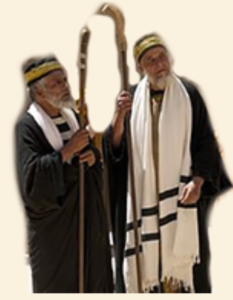
The bottom line: If there was a process to make the Shema our charge and anthem, it likely happened in the mysterious, largely overlooked, and oddly all-male world of the zugos. Ober, exactly how these three chapters found in three different parshas were stitched together and made the final cut, we don’t know with any certainty.
It turns out that the zugos lived during chaos: Hellenism, Sadducees, early Christianity, and Jews confused about whether they were allowed to eat cheeseburgers or marry their cousins, needed a slogan, a creed, a daily affirmation of faith. The Shema fit that bill perfectly. It’s short, it’s punchy, it’s monotheistic. Avada they would’ve pushed it.
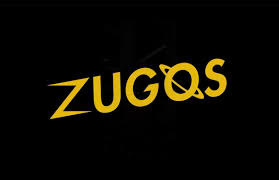
The bottom line is azoy: At that time in Jewish history, prophecy had ended, but the Mishnah hadn’t yet begun. The zugos were the intellectual and spiritual glue holding everything together. And if anyone had the authority to stitch together the Shema from unrelated Torah texts and declare it the Jewish national declaration, it was probably them. How do we know this to be emes? Because -as mentioned mamish above- by the time the Mishneh came along, it seems that the Shema was already established and taken for granted and the battle cry and more for the Yiddin.
And yet — no Mishna, no Gemora, no Midrash, not even a TikTok video from that era says, “The Zugos enacted Krias Shema.” What we do know is that by the time the Mishna opens with “Me’eimosai korin es Shema,” -מֵאֵימָתַי קוֹרִין אֶת שְׁמַע בָּעֲרָבִין, nobody’s asking if we say it — just when. Meaning, it was already old news. The zugos or someone before them had already planted the flag.
So who really gave us Shema? And the answer raboyseyee, is azoy: Like most things in our beautiful religion, we don’t know for sure, but we know it stuck. The idea that the Shema was canonized or emphasized by the zugos is a reasonable hypothesis, but we don’t have explicit sources that say, “The Zugos established Krias Shema.” Instead, we piece it together from context, chronology, and a few strong clues. On the other hand, if the zugos didn’t do it, then it must’ve been the RBSO Himself, who embedded the line in the Torah and let the generations figure it out. And thank the good Lord that He did so. Otherwise, what would Yiddin yell during perilous times?
That’s all mamish gevaldig, ober, how did the Shema make its way into our tefillin and mezuzas? As it turns out the Shema and tefillin seem to have been a perfect match from the get-go. Shema didn’t have to apply for a visa to get in — it wrote itself into the contract. Says the heylige Torah (Devarim 6:8), azoy:
“U’keshartam l’os al yadecha, v’hayu l’totafos bein einecha.” וּקְשַׁרְתָּם לְאוֹת עַל יָדֶךָ, וְהָיוּ לְטוֹטָפֹת בֵּין- עֵינֶיךָ
Tie these words (what words? Shema) on your arm and between your eyes. So we did. Twice. Once for each side of your brain. In fact, two of the four parshiyos inside your tefillin boxes are the Shema (Devarim 6:4–9) and its sequel (Devarim 11:13–21). If you think about it, it’s genius. Tefillin aren’t just sacred accessories. They’re spiritual USB drives loaded with Torah truths, and Shema is file number one.
Ober, why this pasuk? Because in just six words: Shema Yisrael Hashem Elokeinu Hashem Echad, it says everything:
- Hashem exists
- Hashem is One
- He is our G-d
- He deserves our loyalty and love
- We’re in a relationship with Him
Short, poetic, unforgettable. The spiritual tweet of the Torah. It fits on a t-shirt, a tombstone, or a mezuzah scroll.
So gishmak mamish, ober what about shema after dark? How did that come about? As if morning and evening weren’t enough, Shema snuck into bedtime too. What’s pshat? Why? Says the heylige Gemora (B’rochis 4b and 5a) that Rebbe Yehoshua ben Levi said: Even if you already recited Shema in shul, it’s a mitzvah to say it again on your bed. Why? Rava explains—it’s protection. Shoin! Protection is -at times- a very good thing especially in bed, if you chap. As an aside, the Shema -in that situation- may also need some external help.
Over time, this evolved into what we now call Krias Shema Al HaMitah. It became a full bedtime ritual, complete with: Shema Yisrael and often the first paragraph; with Vidui (confession), in case you don’t wake up. (Jewish bedtime = spiritual life insurance.); with Psalm 91 – “Yoshev b’Seyser Elyon,” the anti-demon anthem, and with, Birchas Hamapil – a brocho asking the RBSO for peaceful sleep.
By the time of the Geonim and certainly the Rishonim, this practice was widespread, and codified in Shulchan Aruch (O.C. 239). This wasn’t just going to bed—it was spiritual combat mode. You’re handing your soul to the RBSO for the night, and Shema is the password. Today it’s as regular as brushing your teeth—only holier and less minty.
And now this: Many say that dreams, demons, nocturnal mishaps & midrashic protection plans are all associated with the bed time Shema. Mamish? Let us close with some pillow talk. Says the heylige Zoihar (Vayikra 18a), that bedtime is a spiritually risky business. When a person sleeps, the neshomo ascends to the upper worlds—and what’s left behind is a vulnerable, unsupervised body. Without protection, that body is fair game for negative spiritual forces: mazikin, chitzonim, and all manner of dream-crashing demons. What the hec are those? Her’s shtikel summary chart:
| Term | Translation | Concept | Source | Behavior |
| Mazikin | “Damagers” | Demonic or harmful spiritual beings | Talmud, Midrash | Actively harm people physically/spiritually |
| Chitzonim | “Outsiders” | External spiritual forces that feed off holiness | Kabbalah (Zohar, Arizal) | Passively attach to unguarded or misused holiness |
Whatever they are or do, reciting Krias Shema just before bed with kavono (with heart and focus, directed intent, with your head and your heart fully in it), is described in Kabbalistic literature as arming yourself with spiritual armor. The Shema serves as a barrier against tuma, lustful dreams, and unwanted nighttime emissions (keri). Humm. In fact, several earlier sages (including the Chida, Shlah, and Mishnah Berurah) emphasize that Shema al haMitah can prevent sinful thoughts and their physical manifestations during sleep. Says the heylige Gemora (B’rochis 5a) that we say the Shema al Hamita to ward off mazikin — spiritual forces, demons, nightmares, and all kinds of invisible nighttime hazards. Think of it as an ancient Jewish form of antivirus software; you recite Shema, and your soul has a firewall. Some say it can put out certain fires, if you chap. Certain exegetes, notably the Rokeach and Shibolei HaLeket write that reciting Shema with proper kavono can help protect a man from unwanted emissions at night — what the Gemora calls “keri”. We call it a wet dream.
The bottom line: It’s good to be armed -with protection- but watch out for the hand, if you chap. Says the medrish (Midrash Tehillim 4) that one who says Shema before bed is accompanied by malochim who protect his soul until it returns in the morning. No subscription required. So if you’re worried about what might go bump in the night—or waking up dry, reciting Shema with kavono is your best bet.
The final bottom line: Our wise sages, in their infinite wisdom, handed us the spiritual melatonin: Say Shema, wrap yourself in holiness, and sleep clean. The Shema isn’t just a prayer. It’s a passport. A password. A protest. A love letter. A contract. A creed. It’s the spiritual equivalent of a Swiss Army knife: compact, holy, and always useful. So the next time you say it, don’t mumble. Don’t rush. Don’t zone out. Think about the fact that this one line has carried the Jewish people through exile, torture, triumph, wandering, and redemption. That it sits on your door, your head, your arm, your lips, and your heart. Because the Shema isn’t just a posik. It’s who we are.
A gittin Shabbis,
The Heylige Oisvorfer Ruv
Yitz Grossman
